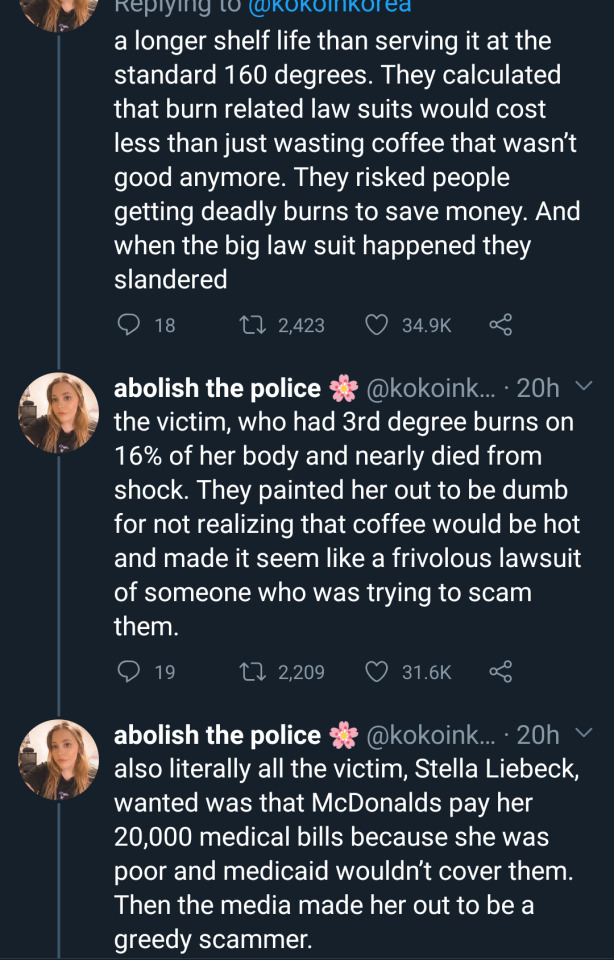Text
Should I start posting on here again? I don’t know. I need to get back to my passion project.
10 notes
·
View notes
Text
The Harvard Murder
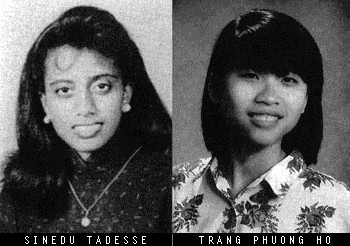
Sinedu Tadesse and Trang Ho were roommates at Harvard University for their sophomore and junior years. Both women had drastically different personalities, Trang was considered popular and friendly, had a great relationship with her parents and was happy. Sinedu always sacrificed her social life for her school work, and she always succeeded, being valedictorian at her high school.
Tadesse was originally from Ethiopia. However when she arrived at Harvard as a pre-med student, she had trouble adjusting, both academically and socially. Her grades were considered “below average” for an Ivy League school, she was told by advisors that would prevent her from attending top-teir medical schools upon graduating. She made no friends and distanced herself from the few relatives she did have locally. In an attempt to make connections, she sent a form letter to strangers she randomly selected out of the phone book. The few that did reply were “alarmed by the bizarre writings and recordings”. One concern recipient forwarded the letters to Harvard.
In contrast her roommate, Trang Ho, was thriving in Harvard. She too had difficulty adjusting but she turned that around when she agreed to room with Sinedu. She made friends easily and was succeeding in her classes. Sinedu was apparently “obsessively fond” of Trang. She had told her father that they were best friends, a feeling Trang wouldn’t reciprocate. Sinedu displayed jealous and obsessive behavior, demanding Trang’s constant attention. By the end of their junior year, Sinedu’s bizarre behavior made Trang so uncomfortable that she told her roommate she made different living arrangements for her senior year. The culmination of her poor grades and lack of social life triggered a depression that Sinedu seemed to direct solely at Trang.
Sinedu sent a letter to the schools newspaper, along with a photo of herself (The same one shown above) and a note which said “Keep this picture. There will soon be a very juicy story involving this woman.” She began to give away her possessions and had brunch with a friend who she had distanced herself from. She purchased a rope, and two large knives. She prepared the act as methodically as she lived her life .
On the Morning of May 28, 1995 Sindeu woke up and calmly went to the bathroom. Trang was asleep, sharing her bed with a friend. That friend woke up to the sight of Sinedu standing blankly above her, stabbing her best friend with a hunting knife. Her friend attempted to kick the weapon out of her hand, but Sinedu stabbed her several times as she fled the attack, she ran out of the room and without realizing it, had locked them both inside. Sinedu stabbed her 45 times, killing her. She then barricaded the door and used the rope she purchased to hang herself from the shower curtain rod. Both women were 21-years old.
The aftermath of the murder/suicide was sharp criticism of Harvard’s handling of the emotional and mental welfare of their students. Housing advisors lacked proper skills or training to spot students needing help, and the administration was considered unsympathetic to the needs to vulnerable students.
I suggest the book Halfway Heaven by Melanie Thernstrom, which goes into much more detail about the case, both the victim and the perpetrator and the aftermath.
24 notes
·
View notes
Text
The Death of Terrell Peterson

On January 15, 1998, 5 year-old Terrell Peterson died in a Atlanta Children’s Hospital of cardiac arrest. His death was the result of longtime abuse at the hands of his foster parent and care-takers, Terri Lynn and Pharina Peterson and Fran Peterson. They were his half-siblings grandmother and aunts.
At the time of his death Terrell was malnourished, covered in burns, cuts and bruises and he had ligature marks on his wrists from where he was tied up for a long period of time.
Terrell was born to an addict mother with drugs in his system, as a baby there are documented complaints from friends and neighbors that his mother was neglecting him and his siblings.
Terrell and his siblings were removed from his mothers care and placed with his half-siblings grandmother, Fran Peterson. He was supposed to be under the care of the Department of Family and Children Services. The system failed him. He was supposed to have monthly visits with case-workers, that never happened. After he was put under the Peterson’s care the department had little to no contact with the child.
Terrell was tied up and hardly fed, he would hunt through trash cans to find food. He was often hospitalized for injuries related to abuse.
During one hospital visit, Terrell stated that the daughter of his guardian, Pharina Peterson, hit him. He was diagnosed with Battered child syndrome. She was arrested for assault and was due to be tried. However, the case-worker failed to take him to court, so the charges were dismissed and Terrell was returned to Peterson. His case-worker attempted to cover up her failings, by faking a report that said the court found no evidence of a crime and that he was ‘safe’ so the case was dismissed.
After the court date, Terrell came to school with burns on both his feet. The burns were so bad that he needed skin grafts onto the soles of his feet. It’s believed that the injuries was punishment for reporting previous abuse. Even after these injuries were documented, there were no visits or investigation from Children’s Services. Terrell died a year later.
After his death there were multiple internal investigations launched by Fulton County Department of Family and Children Services that noted there were severe failures by the department. Still, the department tried to cover up these findings, which were not reported to the public. A year after his death, a whistleblower passed Terrell’s file to a reporter who exposed the department for their failings, not just to Terrell, but to an estimated 800 children who died while in their care from 1995-1998.
Terri Lynn and Pharina Peterson were tried and sentenced to life in prison for Terrell’s murder. The officials complicit in the cover-up were never punished.
Above is the only known photograph of Terrell taken when he was hospitalized for abuse related injuries.
50 notes
·
View notes
Note
Jay I've always been interested in unsolved mysteries. I became interested when Robert Stack had the show. This is how I came across your page. I'm interested to see if the crime has been solved or person has been identified. I sent the lady CeCe Moore a message asking for " The Boy In The Box ", to get DNA so he could be identified after 50 years. The boy finally has a name! My question to you is, was the scalped lady in the New York hotel identified? Thanks
The story is so old, when I did some digging I could only find the old articles about the murder, not about any possible identification. I have a feeling this murder wasn’t covered by the mainstream news.
1 note
·
View note
Text
i learned about Elizebeth Smith Friedman, America’s first female cryptanalyst, worked as a code breaker who successfully broke up a Nazi spy ring across South America during the 1940s. FBI Director J. Edgar Hoover took credit for her work until reports were declassified in 2008 (x)
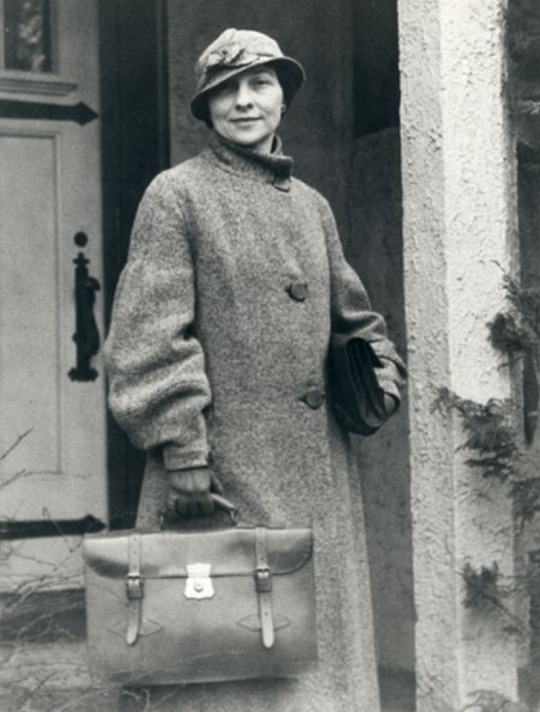
1K notes
·
View notes
Text
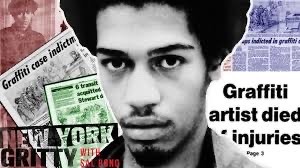
Graffiti Limbo
Michelle Shocked released Graffiti Limbo in 1998 and was met with criticism but also acclaim for tackling the issue of police brutality and examining the death of Michael Stewart.
Stewart was a graffiti artist in Brooklyn, New York who died in police custody after he was arrested for writing on the wall at the First Avenue Subway Station. Stewart, who was an African American male was arrested on September 15th 1983 by Police for spray painting graffiti on the First Avenue Station walls.
He was immediately caught by an officer who claims that Stewart was violent and resisted arrest. At some point during his arrest, Stewart allegedly ran off and fell to the ground, causing officers to restrain him until back up arrived.
Once at the police station, Stewart allegedly became violent again, to which the officers beat him unconscious and restrained him using elastic straps. Witnesses claimed to have heard Stewart’s pleas for help as he was being handled with unnecessary force.
Things didn’t get any better for Stewart and the officers who took him in sent him to a hospital to undergo a psychiatric evaluation.
When he arrived he was tied up and unconscious, with doctors determining that Stewart was brain dead and had suffered from a hemorrhage. The doctors explained that Stewart had to have been strangled or choked for the haemorrhage to have occurred but Police maintained their story.
3 autopsies were conducted and each time, the manner of death changed. At first, the coroner concluded that Stewart had suffered a heart attack and gone into a coma and therefore, the police were not responsible. However, the second and third time around the manner of death was changed to spinal cord injury and then to blunt force trauma.
Sadly, all of the officers who were present at Stewart’s arrest were acquitted of all charges as the jury found that they were not criminally responsible for his death. The community of Brooklyn were outraged and this is what lead Michelle to write the 1998 song.
Outraged by the acquittal of the police officers involved, Michelle wrote what she calls “a protest song” to help keep Stewart’s case in the public eye. Lyrics from the 1998 song are “Graffiti Limbo, where do you go? Graffiti Limbo, when there ain’t no justice. I only speak for myself, but the word around town is that something’s shaking in the underground.”
66 notes
·
View notes
Photo
I remember when they first went to court, they would wear these sleek black suits with black ties...then their attorney had the idea of putting them in pastel sweaters to make them seem more approachable and softer...
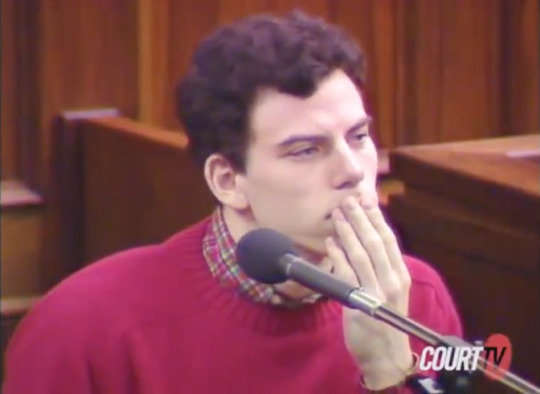

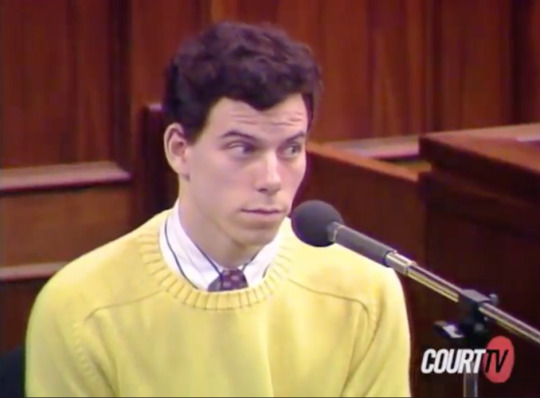

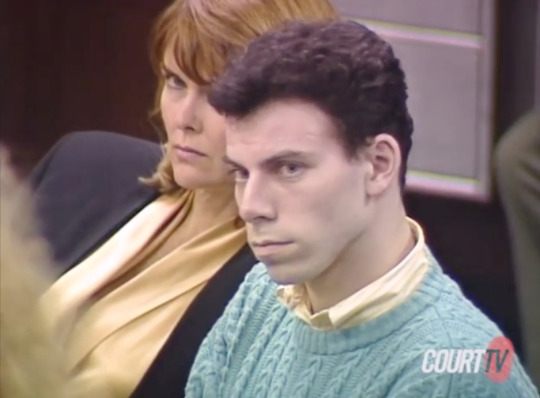

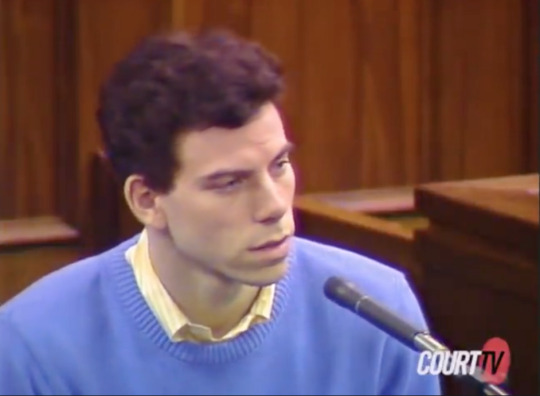
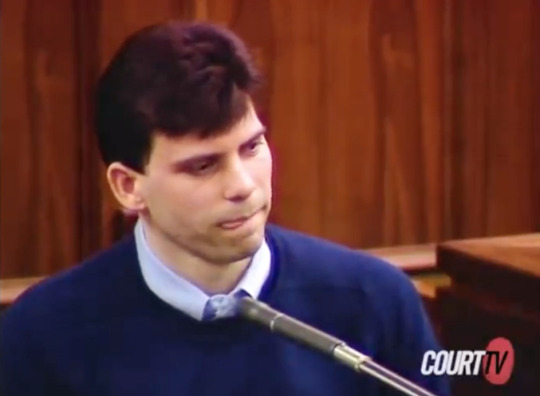


Menendez Brothers: Iconic Courtroom Sweaters
166 notes
·
View notes
Photo




Ming Sen Shiue was born in Taiwan but his family immigrated to Minnesota when he was a young boy. He attended Alexander Ramsey High School in Roseville. It was here, that Shiue developed a crush on his algebra teacher, Mary Stauffer. This crush developed into a full-blown obsession which followed Shieu into adulthood.
On 16 May, 1980, Shiue managed to track Mary down. He kidnapped her and her 8-year-old daughter, Elizabeth, while they left a beauty salon in Rosedale. He tied them both up and dragged them into the trunk of Mary’s car. After driving off, he pulled over to the side of the road because Mary and Elizabeth were making so much noise in the trunk. A 6-year-old boy, Jason Wilkman, was standing at the side of the road watching the entire ordeal unfold.
Shieu noticed the youngster and called him over to the car. When Jason approached the car, Shieu threw him into the trunk and sped off. Next, he drove to a wildlife refuge where he took Jason out of the trunk and beat him to death with a metal rod. He then took Mary and Elizabeth to his house where he held them captive for two months. Over the course of the two months, Mary was routinely sexually assaulted.
Miraculously, one day when Shiue was at work, Mary and Elizabeth managed to escape and call the police. Shiue was quickly arrested and during the subsequent trial, he somehow managed to smuggle a knife into the court and slit Mary’s face while she was testifying against him. Shieu was sentenced to 40 years for the murder and another 30 years for the kidnapping.
538 notes
·
View notes
Photo

Bobby Driscoll (the voice of Peter Pan) became addicted to narcotics when his acting career failed after he got older. In 1968, two little boys became lost after playing in an abandoned part of Manhattan’s underground and found his rotting body. It was surrounded by needles, a wooden crucifix, and religious pamphlets. He was only 31.
2K notes
·
View notes
Note
I just watch the forensic files about the guy in Philippines killing his wife. And your Tumblr came up in my search :-) have you seen other forensics files episodes?
I’ve seen practically all of them! Forensic Files has to be one of my favorite shows. I was so glad when they bought it back for Forensic Files II
1 note
·
View note
Note
Hi! My name is Kristine and I'm a true crime aficionado myself, so I get the "preoccupation with death" thing from my husband. Keep doing what you love! You've manage to create a website for yourself and write! I am absolutely in love with both writing and abnormal psychology--that is a "thing" you know? I wish I could go back in time and stick with my academics and take them all seriously. I may be speaking with and trying to figure out what makes evil brains tick. Thank you for sharing.
Awww, this is so nice! Thank you so much for your kind words!
2 notes
·
View notes
Text
No offense but...some of you people need to proofread before posting. Jesus. Did someone actually use the word “straggled” instead of strangled?! Noooo honey, noooooooo

0 notes
Text
Black Lives Matter
The Death of Latasha Harlins
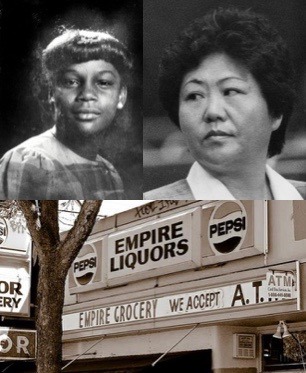
In March 1991, racial tensions were high in Los Angeles, CA. Early in the month police officers were filmed viciously beating Rodney King, a black man. The publicity surrounding the incident bought violence and police brutality against African Americans in the city to the forefront of the American consciousness and the events that followed made sure that they didn’t disappear.
Thirteen days after the infamous King tape was played on the news, a 15-year old African-American girl named Latasha Harlins (upper left) entered a South Los Angeles store called Empire Liquor (bottom). The store was owned by a South Korean couple called the Du’s. Soon Ja Du (upper right) was working the counter while her husband was taking his daily nap in the couples van outside.
It was alleged that Latasha was seen putting a bottle of orange juice in her backpack. Soon Ja incorrectly assumed that she was stealing, although the school girl had money in her hand to pay for the juice. Soon Ja confronted Latasha by grabbing her by her sweater and snatching her backpack. Latasha defended herself by hitting Soon Ja, knocking her to the ground then Soon Ja threw a stool at her. Latasha put the orange juice bottle on the counter and turned her back to leave the store. Just then, Soon Ja retrieved a gun from behind the counter, pointed it at Latasha and shot her in the back of her head, killing her instantly.
Du told police that she was acted in self-defense, but her testimony was quickly contradicted by several witnesses and the fact that the entire incident was caught on tape by the stores security cameras. Soon Ja Du was arrested but found guilty of voluntary manslaughter, not murder. The maximum sentence for that charge was 16 years in prison, which the jury recommended. But in a shocking turn of events the trial judge rejected the sentence recommendation and sentenced Du to 5 years probation, 400 hours of community service, and a $500 fine. Judge Karlin later said that Du’s reaction to Latasha hitting her (after being grabbed and having her bag forcibly taken from her) while “inappropriate” was “understandable”.
The sentence was was considered an insult to the African-American community, aggravating “already existing tensions between African-American residents and Asian-American merchants in South Central.” Karlin was later barred by the District Attorney from ever residing on felony cases involving violence. The death of Latasha Harlins was considered one of the many catalysts of the 1992 LA Riots.
During the LA Riots, Empire Liquor was burned to the ground and never re-opened.
Below is a video about the incident and the events that followed.
youtube
208 notes
·
View notes

